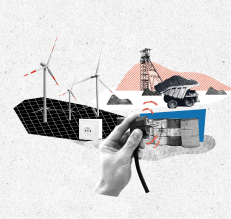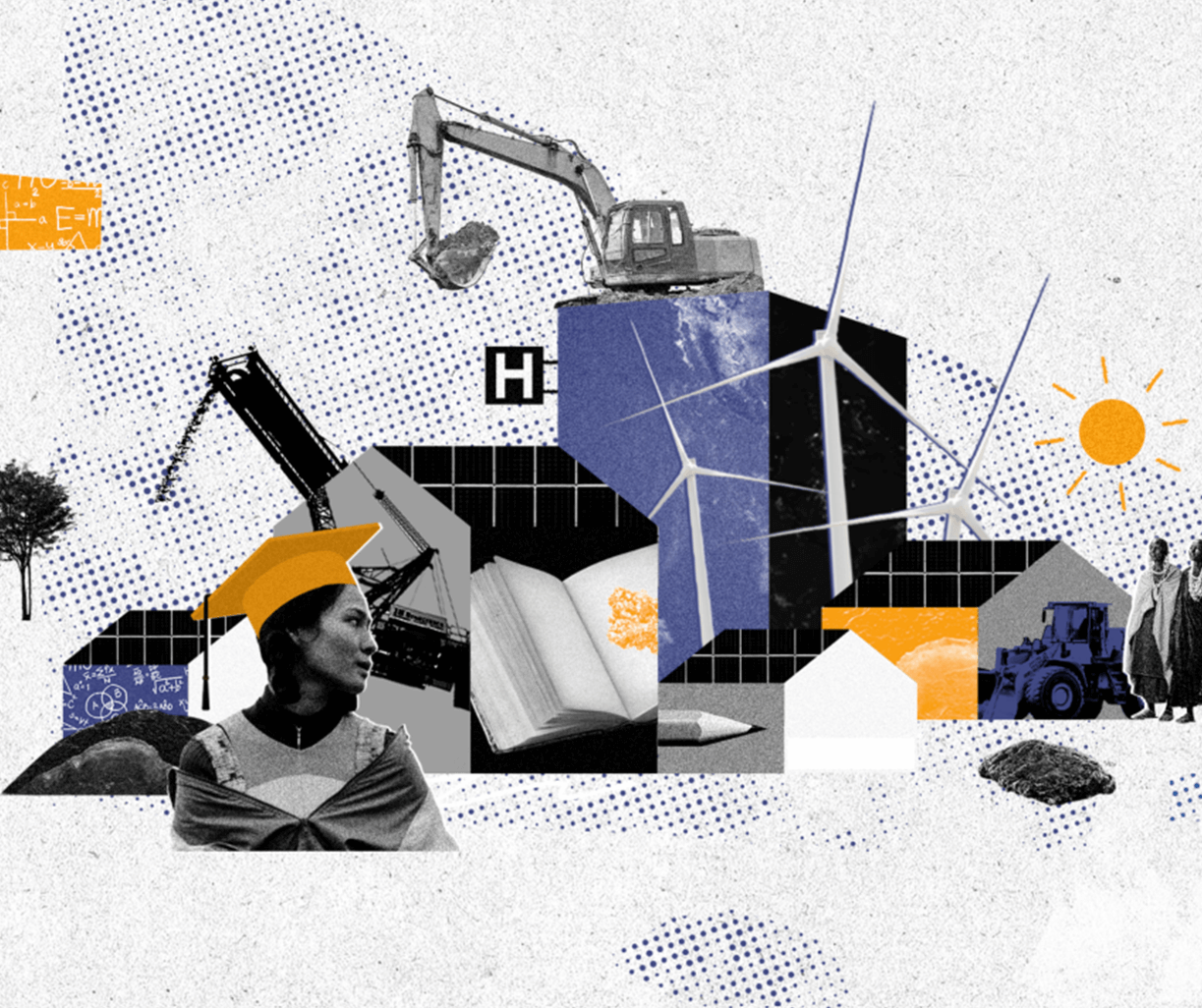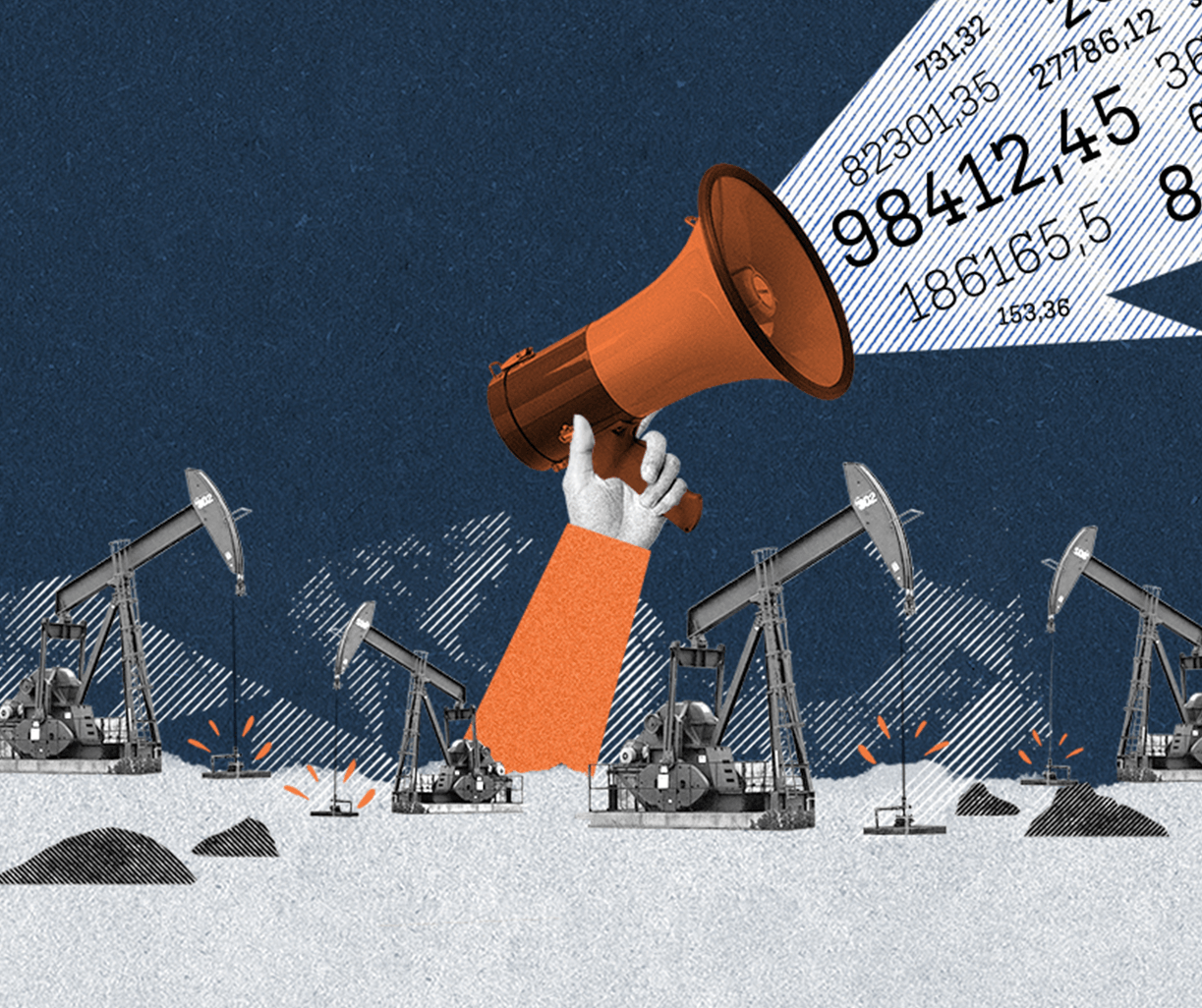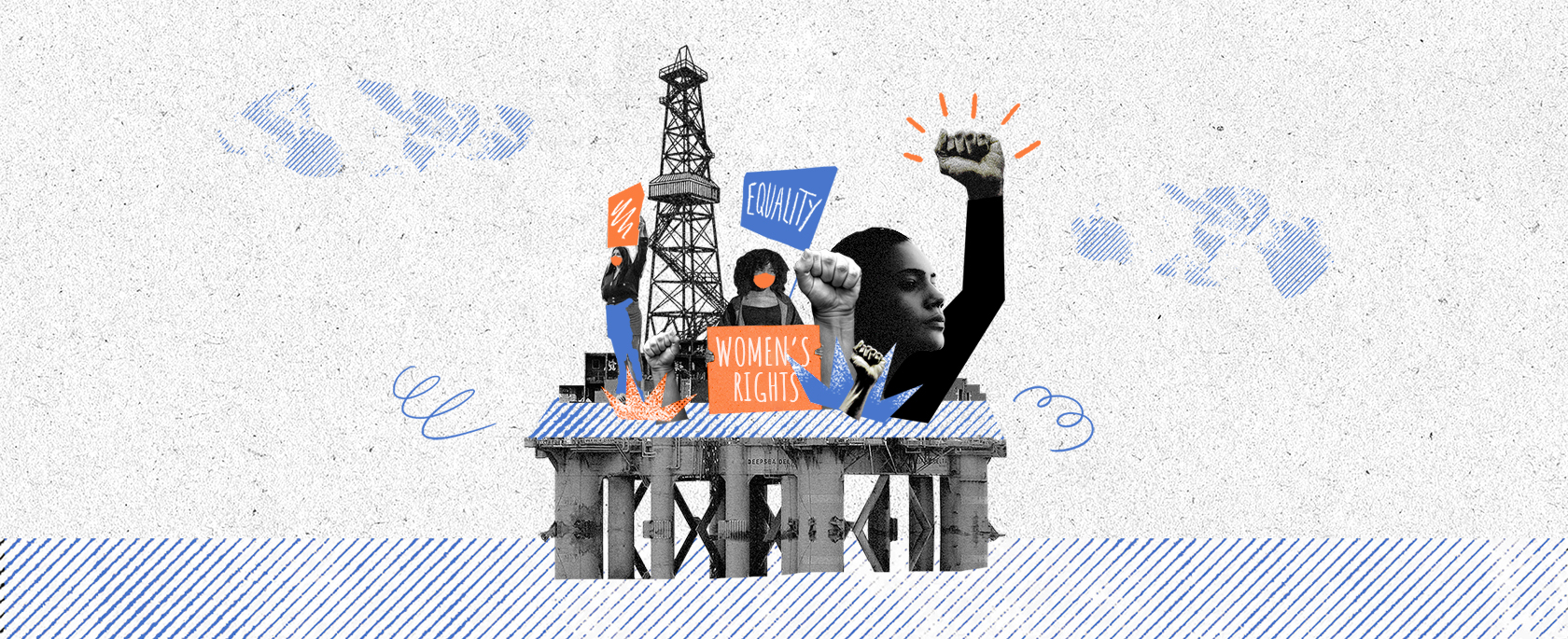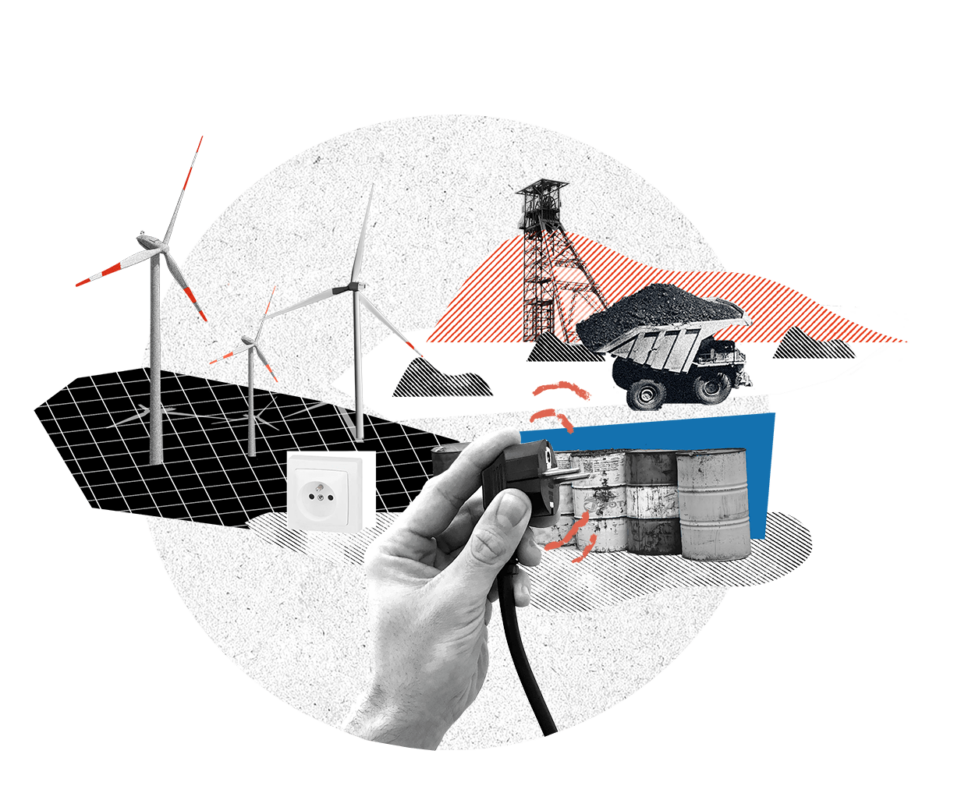[1] Harry Dempsey, « Chinese Battery Groups Invest in Morocco to Serve Western Markets », Financial Times, 27 septembre 2023, sec. Batteries, https://www.ft.com/content/9539f746-82bf-49db-ae87-237196a60c88.
[2] Irma Venter, « Polarium Opens Lithium-Ion Battery Assembly Plant in Cape Town », Engineering News, 29 avril 2022, https://www.engineeringnews.co.za/article/polarium-opens-lithium-ion-battery-assembly-plant-in-cape-town-2022-04-29.
[3] AIE, « Solar PV Global Supply Chains » (Paris : AIE, 2022), https://www.iea.org/reports/solar-pv-global-supply-chains.
[4] Edward Lees et Ulrik Fugmann, « What You Need to Know about Polysilicon and Its Role in Solar Modules », consulté le 26 février 2024, https://viewpoint.bnpparibas-am.com/what-you-need-to-know-about-polysilicon-and-its-role-in-solar-modules/.
[5] Les principaux producteurs se trouvaient en Asie, en Amérique du Nord et en Europe. Le reste du monde ne représentait que 1 % de la production de polysilicium. AIE, « Solar PV Global Supply Chains ».
[6] N E Idoine et al., WORLD MINERAL PRODUCTION 2017-21 (Keyworth, Nottingham : British Geological Survey, 2023), https://nora.nerc.ac.uk/id/eprint/534316/1/WMP_2017_2021_FINAL.pdf.
[7] Selon l’US Geological Survey, aucun pays africain n’était un producteur majeur de silicium en 2022 (l’USGS n’affiche que des données sur les producteurs majeurs). Mineral Commodity Summaries 2024 – SILICON Data Release – ScienceBase-Catalog’, USGS, 30 janvier 2024, https://www.sciencebase.gov/catalog/item/65b7d888d34e36a39045b51b.
[8] ITC Trade and Market Intelligence Section, ‘Export Potential’, Export Potential Map Spot Export Opportunities for Trade Development, consulté le 27 février 2024, https://exportpotential.intracen.org/en/products/gap-chart?fromMarker=re&exporter=1&toMarker=w&market=w&whatMarker=k.
[9] Lees et Fugmann, « What You Need to Know about Polysilicon and Its Role in Solar Modules » (Ce qu’il faut savoir sur le polysilicium et son rôle dans les modules solaires).
[10] Énergie durable pour tous, « Africa Renewable Energy Manufacturing Opportunity and Advancement » (Énergie durable pour tous, 2023), 9, https://www.seforall.org/system/files/2023-01/%5BFINAL%5D%2020220115_ZOD_SEForAll_AfricanManufacturingReport.pdf.
[11] Antonio Andreoni et Elvis Avenyo, ‘Critical Minerals and Routes to Diversification in Africa : Opportunities for Diversification into Renewable Energy Technologies – The Case of Morocco » (Conférence des Nations unies sur le commerce et le développement, août 2023), 11-12, https://unctad.org/system/files/non-official-document/edar2023_BP2_en.pdf.
[12] Énergie durable pour tous, « Africa Renewable Energy Manufacturing », 9-10.
[13] Énergie durable pour tous, 10.
[14] Andreoni et Avenyo, « Critical Minerals and Routes to Diversification in Africa : Opportunities », 11.
[15] Current and Projected Geographical Concentration for Manufacturing Operations for Key Clean Energy Technologies, 2022-2030″, AIE, 11 mai 2023, https://www.iea.org/data-and-statistics/charts/current-and-projected-geographical-concentration-for-manufacturing-operations-for-key-clean-energy-technologies-2022-2030.
[16] AIE, « Solar PV Global Supply Chains » (chaînes d’approvisionnement mondiales de l’énergie solaire photovoltaïque).
[17] Andreoni et Avenyo, « Critical Minerals and Routes to Diversification in Africa : Opportunities », 12.
[18] Andreoni et Avenyo, 12.
[19] Énergie durable pour tous, « Africa Renewable Energy Manufacturing », 9.
[20] Andreoni et Avenyo, « Critical Minerals and Routes to Diversification in Africa : Opportunities », 13.
[21] MacDonald Dzirutwe, « Zimbabwe Bans Chrome Ore Exports to Boost Ferrochrome Industry », Reuters, 3 août 2021, sec. Afrique, https://www.reuters.com/article/idUSL8N2PA65U/.
[22] Analyse de l’auteur basée sur les Nations Unies, ‘UN Comtrade Database’ (comtrade.un.org), consulté le 28 février 2024, comtradeplus.un.org/TradeFlow ?Frequency=A&Flows=X&CommodityCodes=TOTAL&Partners=0&Reporters=all&period=2022&AggregateBy=none&BreakdownMode=plus et ‘World Mineral Statistics Data’ (BGS MineralsUK Centre for sustainable mineral development), consulté le 11 janvier 2024, https://www2.bgs.ac.uk/mineralsuk/statistics/wms.cfc?method=searchWMS.
[23] Données statistiques sur les minéraux dans le monde.
[24] Andreoni et Avenyo, « Critical Minerals and Routes to Diversification in Africa : Opportunités ».
[25] IRENA et BAD, Analyse du marché des énergies renouvelables : Afrique et ses régions (Abu Dhabi et Abidjan, 2022), https://www.irena.org/-/media/Files/IRENA/Agency/Publication/2022/Jan/IRENA_Market_Africa_2022.pdf?la=en&hash=BC8DEB8130CF9CC1C28FFE87ECBA519B32076013.
[26] Agence internationale pour les énergies renouvelables, traité par Our World in Data, « Installed Solar Energy Capacity », Our World in Data, 12 décembre 2023, https://ourworldindata.org/grapher/installed-solar-pv-capacity?tab=map.
[27] Todd Moss, « Why Isn’t Solar Scaling in Africa ? », Asterisk, février 2024, https://asteriskmag.com/issues/05/why-isnt-solar-scaling-in-africa.
[28] Ian Lewis, « Solar Leads the Way as Africa Attracts Fresh Renewables Investment », African Business, 21 juin 2023, https://african.business/2023/06/energy-resources/solar-leads-the-way-as-africa-attracts-fresh-renewables-investment.
[29] Banque mondiale, « Base de données de la Banque mondiale sur la participation privée aux infrastructures (PPI) », s.d., https://ppi.worldbank.org/en/ppi.
[30] Agence internationale de l’énergie, « The Role of Critical Minerals in Clean Energy Transitions » (Publications de l’AIE, mai 2021), https://iea.blob.core.windows.net/assets/ffd2a83b-8c30-4e9d-980a-52b6d9a86fdc/TheRoleofCriticalMineralsinCleanEnergyTransitions.pdf.
[31] Daniel M. Guttmann et Rustem Zagretdinov, « The Wind Energy Sector Market Opportunities across the Value Chain » (BDO, 2023), 5, https://www.bdo.co.uk/getmedia/563de778-4c87-4ad0-97a9-045cb0cd42f0/NRE-BDO-Report-The-Wind-Energy-Sector.pdf.
[32] P. Alves Dias et al, The Role of Rare Earth Elements in Wind Energy and Electric Mobility, EUR 30488 EN, JRC Science for Policy Reports JRC122671 (Luxembourg : Office de publication de l’Union européenne, 2020), doi:10.2760/303258.
[33] Agence internationale de l’énergie, « The Role of Critical Minerals in Clean Energy Transitions ».
[34] ITC Trade and Market Intelligence Section, ‘Export Potential’.
[35] Production of Steel, Crude », BGS Minerals UK, consulté le 27 février 2024, https://www2.bgs.ac.uk/mineralsUK/statistics/wms.cfc?method=listResults&dataType=Production&commodity=73&dateFrom=2021&dateTo=2021&country=&agreeToTsAndCs=agreed.
[36] Données statistiques sur les minéraux dans le monde.
[37] Production de ciment en Afrique par pays », Statista, août 2022, https://www.statista.com/statistics/1049772/cement-production-africa-by-country/.
[38] Tristan Reed, « Why Is the Price of Cement so High in Africa », Let’s Talk Development (blog), 16 juin 2022, https://blogs.worldbank.org/developmenttalk/why-price-cement-so-high-africa.
[39] Fabrizio Leone, Rocco Macchiavello, et Tristan Reed, ‘The Falling Price of Cement in Africa’, World Bank Policy Research Working Papers 9706, juin 2022, https://documents1.worldbank.org/curated/en/727041624328488778/pdf/The-Falling-Price-of-Cement-in-Africa.pdf.
[40] Alves Dias et al, The Role of Rare Earth Elements in Wind Energy and Electric Mobility, EUR 30488 FR.
[41] Gracelin Baskaran, « Could Africa Replace China as the World’s Source of Rare Earth Elements », Brookings, 29 décembre 2022, https://www.brookings.edu/articles/could-africa-replace-china-as-the-worlds-source-of-rare-earth-elements/.
[42] Idoine et al, WORLD MINERAL PRODUCTION 2017-21.
[43] Alves Dias et al, The Role of Rare Earth Elements in Wind Energy and Electric Mobility, EUR 30488 FR.
[44] Janet Richardson, « Wind Turbine Manufacturers », The Renewable Energy Hub UK, 4 octobre 2023, https://www.renewableenergyhub.co.uk/main/wind-turbines/manufacturers-of-wind-turbine.
[45] Conseil mondial de l’énergie éolienne, « The Status of Wind in Africa Report 2023 » (Conseil mondial de l’énergie éolienne, octobre 2023), 29, https://gwec.net/wp-content/uploads/2023/10/Status-of-Wind-in-Africa-Report-V4.pdf.
[46] Conseil mondial de l’énergie éolienne, 27.
[47] L’énergie éolienne en Afrique crée déjà des emplois pendant la phase de construction. Elle a créé 12 400 emplois directs dans des projets qui représentent un tiers de la capacité éolienne du continent. Conseil mondial de l’énergie éolienne, 27.
[48] Conseil mondial de l’énergie éolienne, 27-28.
[49] Conseil mondial de l’énergie éolienne, 29.
[50] Endri Lico, « The Wind Energy Industry Paradox : Short-Term Headwinds and Long-Term Optimism », Wood Mackenzie, 2 mars 2023, https://www.woodmac.com/news/opinion/wind-energy-industry-paradox/.
[51] IRENA et BAD, Analyse du marché des énergies renouvelables : Afrique et ses régions, 43.
[52] Conseil mondial de l’énergie éolienne, « The Status of Wind in Africa Report 2023 », 17.
[53] Linda Munyengeterwa et Sean Whittaker, « Powering Africa’s Sustainable Development through Wind », Development and a Changing Climate (blog), 24 juin 2021, https://blogs.worldbank.org/climatechange/powering-africas-sustainable-development-through-wind.
[54] Conseil mondial de l’énergie éolienne, « The Status of Wind in Africa Report 2023 », 18-19.
[55] Solomon Boadu et Ebenezer Otoo, ‘A Comprehensive Review on Wind Energy in Africa : Challenges, Benefits and Recommendations’, Renewable and Sustainable Energy Reviews 191 (1er mars 2024) : 114035, https://doi.org/10.1016/j.rser.2023.114035.
[56] Carte obtenue à partir de la version 3.3 de l’Atlas éolien mondial, une application web gratuite développée, détenue et gérée par l’Université technique du Danemark (DTU). La version 3.3 de l’Atlas mondial du vent est publiée en partenariat avec le Groupe de la Banque mondiale, à partir de données fournies par Vortex, grâce au financement du Programme d’aide à la gestion du secteur de l’énergie (ESMAP). Pour plus d’informations : https://globalwindatlas.info. Neil N. Davis et al, ‘The Global Wind Atlas : A High-Resolution Dataset of Climatologies and Associated Web-Based Application’, Bulletin of the American Meteorological Society 104, no. 8 (2023) : E1507–25, https://doi.org/10.1175/BAMS-D-21-0075.1.
